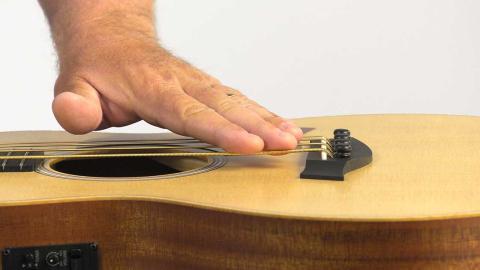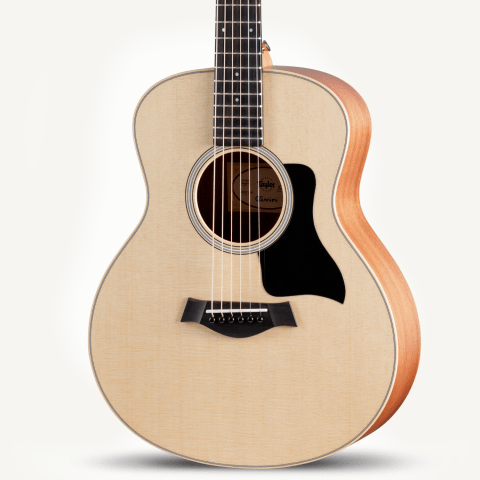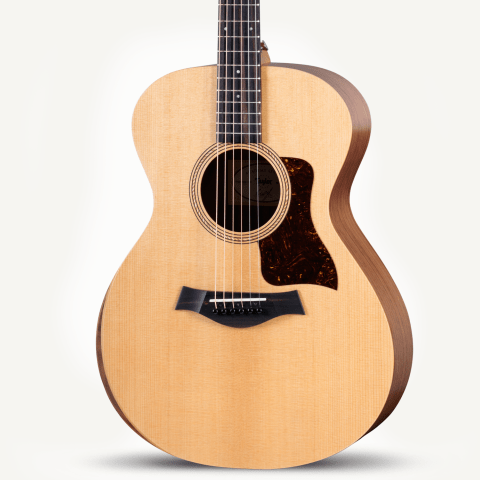
The Taylor GS Mini Bass features custom strings that were designed exclusively for the unique properties of this instrument. The strings are D’Addario GS Mini Bass Custom Light (.037-.050-.062-.090”), featuring a multifilament core wound with D’Addario’s EXP-coated phosphor bronze wrap wire for long-lasting tone and projection. Because of the shorter scale length (23.5 inches) and other proprietary design features, no other strings can be used. Doing so could potentially damage the instrument.
You can purchase replacement strings directly from our online TaylorWare store (visit taylorguitars.com) or through any Authorized Taylor Dealer that sells the GS Mini Bass.
Position yourself comfortably to change the strings. A workbench is ideal; sitting on a sofa and resting the neck of the guitar on the sofa arm is another option. Loosen each string to a point where there’s a decent amount of slack.

Having the fretboard exposed gives you a great opportunity to clean your fretboard. Cover the soundhole with a towel and clean the fretboard with 0000 gauge steel wool. You can rub pretty hard without damaging the fretboard, but be careful not to let the steel wool touch the body. If the fretboard looks dry, consider treating it with fretboard conditioning oil. We suggest using our Taylor Fretboard Oil or boiled linseed oil. A small amount applied to a rag and wiped over the wood is all it takes. Once your fretboard is clean and properly conditioned, it’s time to re-string.
Avoid kinking the strings in any way throughout the restringing process. Kinks can hamper the performance of the strings.
Insert the ball end of each string into the bridge pin hole, keeping the ball end toward the back of the bridge.
Notice the unique dual-prong bridge pin design. This will allow the ball end of the strings to be secured against the back side of the pin (facing the tail end of the guitar) rather than the front side facing the neck. Only one side of the pin is hollowed out below the head. This side should face the neck. The other side has a slight contour/indent.



IMPORTANT: Because of the custom nature of the GS Mini Bass strings — they have a soft and flexible stranded nylon core wrapped with a proportionately heavy wrap wire — do not tug on the strings to stretch them so they settle into proper pitch. This can actually distort their profile and cause poor intonation and unusual fret noises. Instead, you’ll want to gently encourage the string to seat in three locations: at the tuner post, at the nut, and at the saddle.








Customer Service
1-800-943-6782
Monday - Friday
8:00 a.m. - 4:30 p.m. PST
Our El Cajon, California and Amsterdam, the Netherlands Factory Service Center staff can help with any service, maintenance or repair questions concerning Taylor guitars.
+31 (0)20 667 6033
Monday - Friday
8:00 a.m. - 4:30 p.m. (CET)
1-800-943-6782
Monday - Friday
8:00 a.m. - 4:30 p.m. PST
International






























